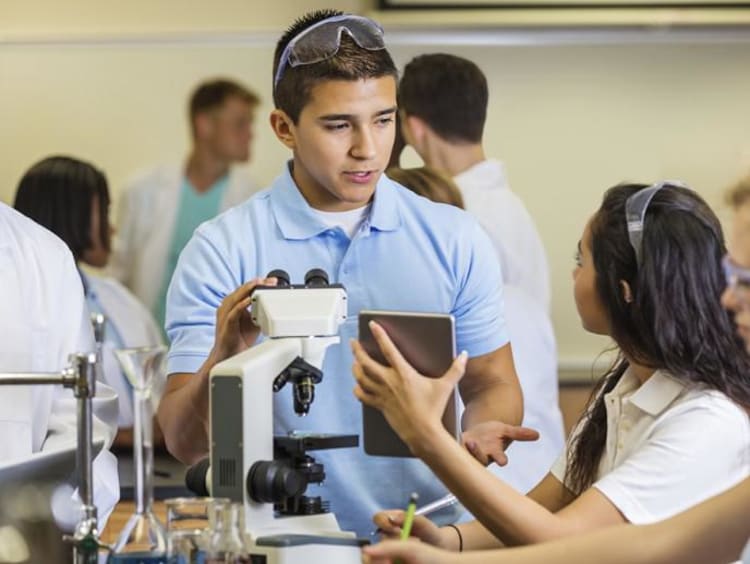4 Steps to Help Students Retain Knowledge
By Rebekah Dyer, M.Ed.
Assistant Professor, College of Education

Teachers use a variety of strategies to ensure their students are learning and retaining knowledge throughout the school year. To be successful, teachers must make connections in order for students to be able to retain knowledge.
In addition, students need to be able to generalize the skills we are teaching them in real-world situations. This is our goal as teachers! We want our students to be able to take what we have taught them out into the world to be successful citizens.
How can we achieve this?
Step 1: Get to Know Your Students
All students learn differently, which means that all students will make connections differently. Teachers need to get to know their students first so that they know how to connect to each individual student. Then, the teacher can identify specific strategies, including differentiated instruction and Universal Design for Learning, to address what each student needs to make those connections.
Step 2: Provide Firsthand Examples
Let’s break this down with an example math lesson. When teaching a lesson in math on measurement, the teacher can begin with having real measuring tools for the students to see and manipulate.
It is important for the teacher to assess the student’s knowledge right off of the bat in order to connect to their prior knowledge. The teacher can provide specific directions on how to measure different objects with the different tools.
Step 3: Get Students Out of Their Seats
Next comes the fun part! Let the students go on a scavenger hunt and measure things around the classroom, in the school and around the neighborhood. This content can be applied to other curricular areas, such as science and history, very easily. This creates even more connections for the students.
Step 4: Help Students Engage and Learn
Don’t be afraid to be creative and to let your students explore! Students remember more from what they do than from what we are only telling them. They need to be able to have firsthand experiences and to critically analyze the information.
Try something new in the next lesson you teach to incorporate brain-based learning.
Want to hear more from the author? Check out her post, “Teachers Appreciating Teachers.”
More About Rebekah:
Rebekah graduated from Arizona State University with a bachelor’s degree in special education and a dual certification in both regular and special education. She completed her master’s degree in educational leadership from Northern Arizona University. Currently, she is pursuing her Doctor of Education in Organizational Leadership with an Emphasis in Special Education at Grand Canyon University. During her 11 years as a special education teacher, Rebekah has fulfilled a variety of roles: she spent five years in a sixth through eighth grade self-contained special education classroom; she taught special education students for a virtual school for six years; she was the middle school resource teacher; and she served as a middle school self-contained cross-categorical special education teacher. Furthermore, Rebekah has taught at Phoenix College, and has been a college supervisor for teacher candidates at Rio Salado Community College and GCU. She is passionate about students with special needs, and she enjoys working with future special educators.
The views and opinions expressed in this article are those of the author’s and do not necessarily reflect the official policy or position of Grand Canyon University. Any sources cited were accurate as of the publish date.


